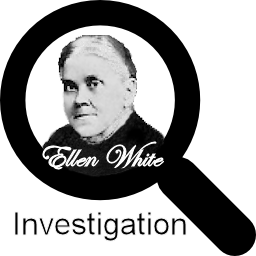Kindred Prophets
By , last updated Aug.
Jesus, Matthew 24:11
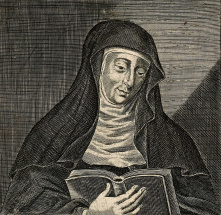
Throughout Christian history various prophets have arisen proclaiming themselves to be God's messenger. For example, Hildegard of Bingen (1098-1179) claimed to have had a series of divine visions from a young age. At age 42, she claimed God instructed her to write out her spiritual experiences. She documented these revelations in a collection of writings called Scivias. Interestingly, she was able to write books and correspondence even though she was "untaught in writing." She believed that her visions were gifts from God and that she was receiving direct communication from the divine realm. She saw herself as a "prophetess" who was called to convey these revelations to others. Hildegard's visions covered not only sin and salvation but also medicine. Beginning in childhood, she was troubled with "chronic ill health." In her later years, she became a public preacher. Her writings, preaching, and visions expounded upon Catholic doctrines. For example, one of her visions portrays Mary on a throne reigning as the powerful Queen of Heaven.1
The era of 1700-1900 could be described as the pinnacle period of prophets. In a changing world, Christians sought for new revelations. They flocked to prophets like flies to honey. Prophets were prized for their extra-biblical revelations and they proliferated during this period. Many of them had visions, claimed to be hearing from God or his angels, wrote out their testimonies and teachings for their followers, and guided their sects into new truth. Below are some of the more prominent prophets who lived in the same era as Ellen White.
Emanuel Swedenborg, 1688-1772

Emanuel Swedenborg was born in Sweden in 1688. He was well-educated, worked as a prominent scientist and inventor, and was a prolific writer. He wrote 77 books in his lifetime. At the age of 53, he began receiving "dreams" and "visions." He came to believe that Jesus was appointing him to write books about his revelations. Calling himself the servant of the Lord, over the last decades of his life he wrote 18 spiritual books, which his followers regard as inspired volumes (click here to read). Regarding his calling, he wrote:
I have been called to a holy office by the Lord himself, who most mercifully appeared to me, his servant, in the year 1743, when he opened my sight into the spiritual world and enabled me to converse with spirits and angels.2
Like Ellen White, Swedenborg taught that he and his writings were inspired by God:
| Ellen White | Emanuel Swedenborg |
|---|---|
| "In my books, the truth is stated, barricaded by a 'Thus saith the Lord.'"3 | "I know for certain that what I write is the living truth of God."4 |
| "I am only an instrument in the Lord's hands to do the work He has set for me to do."5 | "I am like an instrument with which He does according to His good pleasure."6 |
Like Ellen White, Swedenborg had an interest in beings on other planets, and wrote an entire book on the subject in 1758—Other Planets. He made some amazing predictions, including prophesying the date upon which he would die. One interesting aspect of his theology that Seventh-day Adventists can appreciate was his rejection of the doctrine of eternal damnation.7
Swedenborg never founded a church, and only had a handful of followers during his lifetime. However, after his death, he lived on through his writings. They were translated into many languages and spread throughout the world. His followers founded a new Christian sect in which—like Seventh-day Adventism—both the Bible and his revelations are taught. His followers founded the The New Church in the United Kingdom and the The Swedenborgian Church of North America.
Ann Lee and the Shakers, 1736-1784
As a child, Ann Lee's parents were too poor to provide her with an education.8 Like Ellen White, she had four children, but all of Ann's children died as infants. Ann joined a sect later known as the Shakers. They believed that shaking and trembling were manifested in the body as the Holy Spirit was cleansing it from sin. She had visions in which she came to learn the dangers of lust and she gave her testimony about the importance of being celibate. In addition to shaking and trembling, the Shaker community that Ann founded claimed the Holy Spirit also manifested through "speaking in unknown tongues, prophesying and singing melodious songs."9 Like Mrs. White, she required a "peculiar kind of dress" and "opposed war and the use of pork."10 Ann "performed a number of miracles, including healing the sick by touch."11 The sect founded by her followers shunned the world and looked forward to the imminent return of Christ. The sect reached 6,000 members by the 1840s, but due primarily to their advocacy of celibacy, the Shakers fizzled out in the twentieth century.
Joanna Southcott, 1750-1814
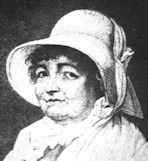
Joanna Southcott was a poor and uneducated woman who grew up in England. Like Mrs. White, she was originally a Methodist. At the age of 42, she "announced that God had chosen her as a messenger of his Second Coming" and she "began to write prophecies and published 65 books" and also "announced herself as a prophetess."12 Like Mrs. White, she made a good living off of the books that she published. She made a number of predictions which her followers believe came true. She wrote our her prophecies even though she claimed to be illiterate. She kept the seventh day Sabbath and taught her followers to do the same. She also had trances like Mrs. White, announcing the speedy advent of Christ.13 Like Ellen White, she prophesied falsely that Jesus would return during her lifetime. Like Ellen White, she believed other churches had strayed from the truth. She claimed to have experienced various physical manifestations during her visions. These physical phenomena were often seen by her and her followers as signs of her divine connection and the authenticity of her prophetic mission. Some of the reported physical manifestations included, trembling, shaking, and her face becoming radiant.
Joseph Smith, 1805-1844

Like Adventism, Mormonism started in the Northeastern United States. In 1823, Joseph Smith, founder of the Mormons (also known as the "Latter Day Saints"), began to have "visions" and "revelations," and even conversed with angels. In the picture (to the left), Smith is shown receiving "inspiration" from an angel or spirit guide. Smith published a number of books, some of which show a remarkable similarity to Mrs. White's writings. Smith claimed the second advent of Christ was at hand, hence the name, "Latter Day Saints." His mission was to introduce "the new dispensation." According to Smith, his followers are the "saints," and all the other churches are "heathen," or Gentiles. (Note: Mrs. White's called her followers "saints" and all other churches "Babylon" or apostate.) Like Ellen White, Smith had health reform revelations. In 1833, when Ellen Harmon was six years old, Smith received his health revelation which included many of the major ideas that Ellen White would later adopt. In the Word of Wisdom revelation, Smith was shown it was wrong to use alcohol, tobacco, or "hot drinks." The revelation advocated a diet of vegetables, fruits, and grain, with very limited use of meat. Like Ellen White, Smith referred to grain products as "the staff of life" (D&C 89:14). By 2025, the sect founded by Smith had grown to over 17 million members operating in at least 160 countries.
Mary Baker Eddy, 1821-1910
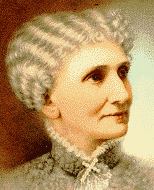
Mrs. Eddy is the prophet-founder of the Christian Science Church. She was an author who published a number of books. Like Mrs. White, she had an interest in health. In 1890, she published her most famous book, Science and Health, which has been translated into over 16 languages and read by over ten million people. The disciples of Mrs. Eddy believe the writings of their prophet to be inspired and infallible. She once prophesied:
To my sense, the most imminent dangers confronting the coming century are: the robbing of people of life and liberty under the warrant of the Scriptures; the claims of politics and of human power, industrial slavery, and insufficient freedom of honest competition; and ritual, creed, and trusts in place of the Golden Rule, 'Whatsoever ye would that men should do to you, do ye even so to them.'14
Following are some parallels between her and Mrs. White:
| Ellen White | Mary Baker Eddy |
|---|---|
| Born in the 1820s | Born in the 1820s |
| Born in New England | Born in New England |
| Injured and not able to attend much school | Ill and not able to attend much school |
| As a young woman, lost consciousness to the world | As a young woman, suffered spells of unconsciousness |
| Sought hydrotherapy to restore health | Sought hydrotherapy to restore health |
| Claimed divine inspiration | Claimed divine inspiration |
| Published books on health reform | Published a book on health reform |
| Lived a life of the rich and famous | Lived a life of the rich and famous |
Other Visionaries of the 1800s15
In his book Prophetess of Health, SDA historian Ronald Numbers detailed how, in the 1800s, America abounded with "prophets" of every description:
- In the 1830s an epidemic of visions spread through the Shaker communes as young girls "began to sing, talk about angels, and describe a journey they were making, under spiritual guidance to heavenly places." Frequently those afflicted "would be struck to the floor, where they lay dead, or struggling in distress, until someone near lifted them up, when they would begin to speak with great clearness and composure."
The People Called Shakers, 152-153
- Rebecca Jackson, was a black Shaker who founded a small religious community in Philadelphia in the mid-1800s. She was known for her prophetic dreams, inner voices, and waking visions. Gifts of Power: The Writings of Rebecca Jackson: Black Visionary, Shaker Eldress, Jean McMhon Humez, ed., 6
- Jemima Wilkinson, who in 1790 founded the religious community of Jerusalem in western New York was known for her visions, religious dreams, and prophesying. One of her followers, Sarah Richards also had visions. She would swoon as she went into vision and lie "motionless and apparently lifeless" for a while. Afterwards, she would rise up to deliver her message. Pioneer Prophetess, Jemima Wilkinson, 63 Wilkinson reportedly had a vision in which it was revealed to her that all sexual activity was evil. Her group advocated celibacy, which could explain why the group died out in the early 1860s.
- John Starkweather, a Millerite, and the assistant pastor of Joshua Hime's Chardon Street Chapel, had what some critics described as "cataleptic and epileptic" fits that greatly embarrassed his more subdued colleagues. He was eventually expelled from the chapel when his spiritual gifts proved to be contagious.
- John Alexander Dowie, born in 1847, claimed divine inspiration, believing himself to be the second Elijah. In 1901 he founded Zion City, a Christian Community, where Dowie "would allow no liquor, pork, tobacco, or drugstores." Calling itself a theocracy, Zion City maintained a well-disciplined community. Dowie believed this movement would usher in the millennium. It was claimed that he performed hundreds of miraculous cures. The devotion and enthusiasm of his followers were unbounded. Money flowed in freely. Like Mrs. White and Mrs. Eddy, he was dogmatic and arbitrary. His word was law. He required an austere religious life.
- Rachel Baker, born in 1794, was baptized into the Baptist church at age 16. She was described as devout but not caught up in enthusiasm. She frequently attended religious meetings. She was known to have an exemplary character and was is in good health. Shortly after her baptism, she began having periods in the evening where she lost consciousness. Lying on the floor, her eyes closed, the rest of her body completely motionless, she would begin speaking in an audible and forcible tone. Her words poured forth in a fluent and rapid stream. At times she was remarkably animated. While in this state she prayed, preached, and exhorted for 45 minutes to an hour. She was able to recite books while speaking. Her sentiments conformed to those of her sect. She responded to questions with pious answers. She had views of "angels, saints, and souls of just men made perfect, ministering before the throne of the Almighty, clothed in robes white as snow, without spot or blemish."16
Harriet Tubman - Visions after Head Injury, 1822-1913

Around the age of twelve, African-American Harriet Tubman was struck in the head by a metal weight that was thrown by a slave overseer. She passed out but recovered without medical care, although she endured lifelong pain. Because of the injury she was not able to learn how to read or write. After the injury, she became intensely religious and became active in the Methodist church. At the same time, she began having visions and vivid dreams which she interpreted as revelations from God.17 Unlike Ellen White's vague revelations of the Civil War, Tubman received specific information on the end of slavery during the American Civil War. After one of her "visions," two years before the Emancipation Proclamation, she claimed that God had showed her the end of slavery.
Mrs. Parker - Lectures While in Vision18
A letter from SDA Daniel Bourdeau was published in the February 24, 1859, edition of the Review and Herald. Bourdeau attended a meeting during which Mrs. Parker from Morristown, Vermont, was scheduled to speak. Within five minutes of arriving, Mrs. Parker fell into a trance. Bourdeau writes of the incident to Uriah Smith:
She rubbed her hands and face, twisted, and made such gestures as were calculated to captivate the attention of the congregation; and when she was perfectly under the control of the spirit of Doctor Franklin(?) she arose, with her eyes closed, drew near to me, and delivered me a lecture on the subject of universal salvation through Christ.
After the vision, Bourdeau spoke with her at length and concluded the devil was speaking through her. He referred to the event as an "awful delusion."
Visionaries in Garabanda, Spain19
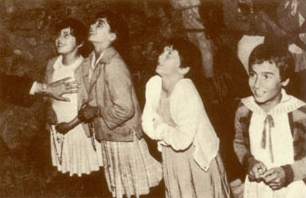
In the summer of 1961, several young Catholic girls in Garabanda, Spain, reportedly had "visions" of the virgin Mary. For those familiar with the tales of Ellen White's visions, many of the manifestations of these Catholic girls mirror those of the young Ellen White.
- Supernatural protection from injury while in vision: "When the vision appeared, the girls fell instantaneously on their knees, striking the sharp rocks with a loud noise that was frightening, yet they showed no signs of injury."
- Supernatural expression on face: "The expression on their faces was suddenly transformed. Their look became extraordinarily beautiful, sweet, one of profound mysticism. There are no words that can properly describe the change. They were completely absorbed in their rapture, unaware of anyone or any material thing around them except for each other."
- Supernatural trance-like state: "They did not react to pricks, burns or blows. All attempts to distract them failed. Powerful beams of strong light were focused on them, yet their eyes did not even flicker, blink or show any signs of discomfort. Quite the contrary, their eyes remained wide open , expressing a look of intense joy. However, when the girls returned to the normal state, they immediately shielded their eyes from those bright lights which under normal circumstances should have caused permanent eye damage."
- Supernatural immobility: "On many occasions they remained immobile in off-balance, beautiful 'sculptured-like' positions, heads tilted back, eyes looking up, kneeling on the rocks or bare-legged in the snow."
- Supernatural energy: Had visions in the night, but the next day they showed no "signs of fatigue."
- Supernatural conversions: "On seeing the girls approach, many witnesses experienced such a tremendous spiritual awakening, that it produced a very deep interior emotion in them. They cried unashamed tears, admitting the supernatural nature of what they were seeing, hearing and feeling within them, the very presence of the Mother of God. The conversion of unbelievers and those of different faiths, of souls suffering from religious indifference, the conversions of many sinners, all of which have experienced an increase in faith, hope, and charity."
- Supernatural gravity-defying acts: "The girls went throughout the entire village - up and down stairways, in and out of homes, at all hours of the day and night, avoiding obstacles without faltering, guided solely by the vision. Frequently, they ran at great speed down the steep mountainside, even backwards, so that it was impossible for the astonished spectators to follow them. Their bodies did not seem to be subject to the law of gravity, but endowed with some sort of spiritual agility."
- Supernatural protection from flame: "...she placed the flame of the heavy candle beneath the fingers of her left hand which were spread apart so that the flame easily passed between them. A fairly strong breeze got up at that moment, and made the flame flicker, but it did not seem to cause any harm to the skin it touched."
- Testimony about God's anger: Conchita on January 1, 1965 warned of "God's anger." She earlier had written a testimony about a punishment that was coming that would be "more terrible and fearful than anything we can imagine."
Visionaries in the Millerite Movement
Visions were widespread among Methodists and others during the era preceding the arrival of William Miller. Susan Juster identified a minimum of 315 men and women who were documented as prophets in England and North America between 1750 and 1820, and she acknowledged there were likely many others.20
After Miller started preaching, the millennial fervor brought out a whole host of "prophets." Minister Peter Cartwright observed some of these visionaries in action. He wrote of them:
They would fall at meetings and lay apparently powerless and motionless for days, sometimes for a week at a time, without food or drink; and when they came to, they professed to have seen heaven and hell, to have seen God, angels, the devil and the damned; they would prophesy, and, under the pretense of Divine inspiration, predict the time of the end of the world, and the ushering in of the great millennium.21
As a girl, Ellen met two Millerites she regarded as prophets. Millerite preacher William Foy claimed to have received visions from God, and later published them in a book. (Some of Ellen's early writings appear to closely resemble Foy's.) Ellen's sister Mary's brother-in-law, Hazen Foss, also claimed to have received visions.
In its final days, the Millerite Movement was so infected with religious enthusiasm that Joshua Himes complained of being in: "mesmerism seven feet deep."22
Dr. R. C. Gorgas claimed to have had visions showing Christ would return at 3 a.m. on October 22, 1844. He wrote:
I was led to the Cross on the Clock striking 3, after which I was prostrated to the floor by the Holy Spirit, when the above was represented to me, but could not understand it until it was shown me. For six mornings the Holy Ghost took me about the same time, and I had to praise the Lord when the above was gradually represented to my mind, and on the 6th day, in Baltimore, at meeting, in the presence of perhaps 2000 persons, the Lord said unto me, it is enough. I arose and shouted, and spoke to the People. And on the 7th the Lord gave me a clear view of the vision of Daniel, the 70 weeks cut off, and it was finished.23
Experiences like Gorgas' were not uncommon. At a conference in Boston on April 1844,the meeting broke down in chaos with a number of women falling into "mesmeric ecstasies."24 In 1844, Millerite leader Sylvester Bliss warned "against the reveries of enthusiastical hallucinations."25
Visions Continue After the Great Disappointment
According to Ronald Numbers, fanaticism continued to plague the Millerites even after the October 22 disappointment, and it seemed particularly prevalent among the "shut door" believers. In Springwater Valley, New York, a black shut-door advocate named Houston claimed that at times God spoke to him in visions. The shut-door group in Ellen Harmon's home town of Portland, Maine, was even more notorious in Millerite circles, as Joshua Himes describes its: "continual introduction of visionary nonsense." In March of 1845, Himes informed Miller that a Sister Clemons of Ellen Harmon's home town of Portland, Maine, "has become very visionary and disgusted nearly all the good friends here." A couple of weeks later he reported that another Portland sister had received a vision showing that Miss Clemons was of the Devil. Himes wrote to Miller of the problems in Portland, "things in Maine are bad—very bad."26
Even non-Adventists noted that visionaries were prevalent in Ellen Harmon's hometown of Portland, Maine. One resident wrote that among the city's "children of light...nothing was more common than visions."27 After 1844, in addition to prophet Foy, there were at least four female Millerite visionaries operating near Ellen White in Maine (Dorinda Baker, Emily Clemons, Mary Hamlin, and Phoebe Knapp).28 Interestingly, Mrs. White did not seem to get along well with any of them.
Former Millerite leader Samuel S. Snow claimed to have the prophetic gift in 1845. Like Ellen Harmon, he consigned those who did not believe in him to Hell.29 A woman named Sister Matthewson also reported having visions around this same time.30 Thus, visions and prophets flourished amongst the former Millerites.
SDA Visionaries
Unbeknown to many Seventh-day Adventists, Ellen White was not the sect's only prophet. There were several other female prophets who arose, but the reason they are virtually unknown is because James and Ellen White went through pains to silence them or diminish their influence. In 1859, Ellen White rebuked the young Adventist prophetess Phoebe Knapp. She wrote that the woman was "professing to have visions of God, yet teaching the grossest errors..."31 Several years later she also rebuked another up-and-coming SDA prophetess, Myrta E. Steward of Wisconsin:
The pretensions of Sister Steward to have visions, the fanaticism of the most wretched, revolting kind being the fruits, and the influence of the false exercises...32
After Ellen White bashed her and her family as fanatics, Prophetess Steward turned against her and managed to turn many others in her town against Ellen.33
Another prophet that annoyed Ellen White was Anna Phillips, who gained some notoriety within Seventh-day Adventism in the early 1890s, with her "visions" and "testimonies." Some thought of her as the new and improved Ellen White. Mrs. White put a quick stop to that. Mrs. White fired off several scorching letters claiming "Satan" was using Phillips to lead souls away from the truth, that she had a "conceited and deceived mind," and that the SDA leaders should not call "the attention of the people" to Phillips.34 Thus, Ellen's rival was quickly quashed.
The visionary that likely caused Mrs. White the greatest consternation was Sister Ogden. The manner of Ogden's "visions" reminded people of Ellen's "visions" and this caused people to doubt Ellen's visions. Ellen was particularly outraged when Brother Moses Hull "said she looked just like Sister White when she was in vision." Ogden appeared to be under the control of someone else, which reminded people of how Ellen would seem to go into and out of vision at James' whim. As usual, Ellen attributed it all to Satan:
Satan saw the influence of the visions was affecting some, and by controlling Sister Ogden and making her think she had a vision while under a satanic influence confirmed the opinions of many that Brother White controls his wife and gives her visions; therefore the visions are only Brother White's mind.35
In the 1880s, SDA Annie Garmire prophesied probation would close in 1884. Similar to Ellen White's failed prophecies about Christ's return, Annie's prophecies also failed. Ellen told Annie's parents that this was proof that her daughter's visions were false and Annie was an agent of Satan. She condemned the parents because their fanatical teachings were confirmed by Annie's visions, much in the same way that Joseph Bates' outlandish theories about the Seal of God were confirmed by the young Ellen White. Mrs. White wrote of Annie: "She may say [many] good things, may speak much that is truth, but so does the enemy of souls."36 That is a point every SDA should ponder.
In the early 1900s, SDA members Ralph and Mary Mackin in Ohio began receiving prophetic messages and other manifestations. In 1903, Ellen White sent them a letter telling them, "you are deceiving yourselves and deceiving others," and she commanded them: "It is high time that you call a halt."37
Thus, Ellen White successfully managed to stifle all of her prophetic competitors during her lifetime.
Conclusion
The 1700s and early 1800s were an era when visionaries and prophets were popular and attracted large followings. Mrs. White grew up in the charged atmosphere of religious "enthusiasm" and was closely associated with several other visionaries of her time. Perhaps these associations helped to shape her own prophetic career. While affirming herself as the one and only true prophet, she derided other visionaries as fanatical, deceived, and under the influence of Satan.
See also
